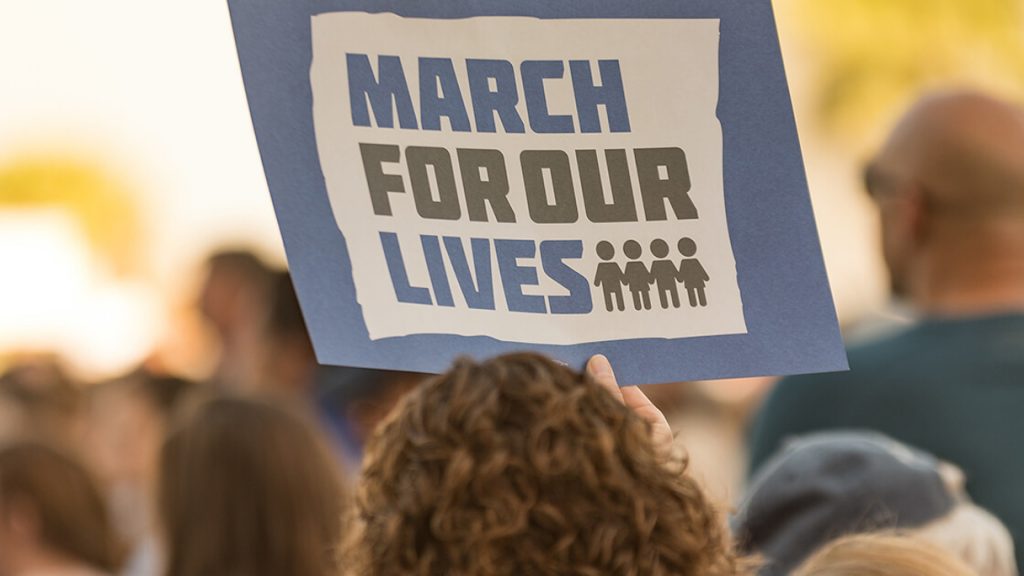
By Jacob Hillesheim | Rewire
We don’t know exactly how many students walked out of their schools on March 14. Vox eventually reported that “hundreds of thousands” left their classrooms for 17 minutes, one minute for each person killed in the horrific shooting at Stoneman Douglas High School in Parkland, Florida. Throughout the United States, people were shocked by the size and scope of the walkouts.
But, if you look at it in the context of U.S. history, it’s not at all surprising. Young people, especially young people of color, have always participated in, and sometimes led, movements for social change.
Here are some of the movements that predated March for Our Lives and shaped our country.
Teenagers leading the way
Although there is no historical consensus as to when the African American civil rights movement began, 16-year-old Barbara Johns has as good a claim as any. On April 23, 1951, three years before Brown v. Board of Education struck down segregation in public schools, Johns organized a day of picketing in her segregated Virginia school before leading a march to the county courthouse.
Segregationists responded to the Brown v. Board of Education ruling with a campaign of “massive resistance,” including in Little Rock, Arkansas. Nine African American students had enrolled in Little Rock’s Central High School in 1957, but the governor used the state’s National Guard to keep the school segregated. One of the students, Elizabeth Eckford, walked to school alone, giving us the now-iconic photograph Eckford stoically enduring the harassment and slurs of the white mob. Central High School was eventually integrated, largely thanks to the courage of nine students age 14 to 16 who forced a showdown between Arkansas and the federal government.
In 1960, four African American college students, all under the age of 20, sat down at the “whites only” lunch counter at a Woolworth store in Greensboro, NC. The “Greensboro Four” sparked a wave of sit-ins across the country, one of which was led by Charleston, South Carolina, high schoolers. The sit-in movement led to the desegregation of department store restaurants and many of the movement’s leaders became founders of the Student Nonviolent Coordinating Committee, the tip of the spear for the African American civil rights movement.
Walkouts to end segregation
The most famous involvement of young people during the Civil Rights Era was in Birmingham, Alabama, where Martin Luther King Jr. and the Southern Christian Leadership Conference launched a campaign to end segregation in the city.
Unfortunately, they struggled to get the movement off the ground. James Bevel, a veteran of the Nashville sit-ins and the Freedom Rides, pitched a controversial idea to King: Get young people involved. As Bevel later explained, “Most adults have bills to pay… But the young people, wherein they can think at the same level, are not at this point hooked with all those responsibilities.”
On May 2, 1963, hundreds of students, some as young as first-graders, walked out of their schools and into the streets, where 900 were arrested. The next day, more than 1,000 children set out from the 16th Street Baptist Church. They made it only a block when the Birmingham Police arrived to intervene.
Images of police officers using police dogs and fire hoses–powerful enough to strip the bark from trees–on African American students shocked the world. Soon after, President John F. Kennedy proposed a sweeping civil rights bill signed into law by his successor. The Civil Rights Act of 1964 barred “discrimination or segregation on the ground of race, color, religion, or national origin.”
A push for better schools
African American students were not the only ones to stage walkouts during the civil rights era. In 1968, Chicano students conducted a massive walkout to protest educational injustice. Chicano schools in East Los Angeles were segregated, run down, overcrowded and understaffed.
The first walkouts took place March 1. Over the next week, more than 15,000 students filled the streets. They demanded improved facilities, bilingual and bi-cultural education and representation in curriculum, faculty and administration.
The walkouts did not change much immediately. The school district claimed it did not have enough money to implement all the changes that were demanded. However, the students exposed educational discrimination, Mexican American college enrollment increased the next year and universities began offering Chicano studies courses. The Brown Berets, the Chicano equivalent of the Black Panthers, spread nationwide. Once again, young people spurred the political “awakening” that made all of this possible.
March for Our Lives follows a long tradition of young people directly impacting our country. Young people can’t vote or leverage as much economic influence as their parents and grandparents. But when young people realize their stake in the politics and issues of the day, they tend to get involved. And when they do, they tend to change history.
The trend of expanding voting rights
But what if young people could vote? This debate takes on new relevance today as young people across the country are making their voices heard in the wake of the Stoneman Douglas high school shooting. Washington D.C. is on track to lower the voting age to 16.
America From Scratch, a new PBS Digital Studios series, explores just that:
![]() This article originally appeared on Rewire.
This article originally appeared on Rewire.
© Twin Cities Public Television - 2018. All rights reserved.
Read Next



